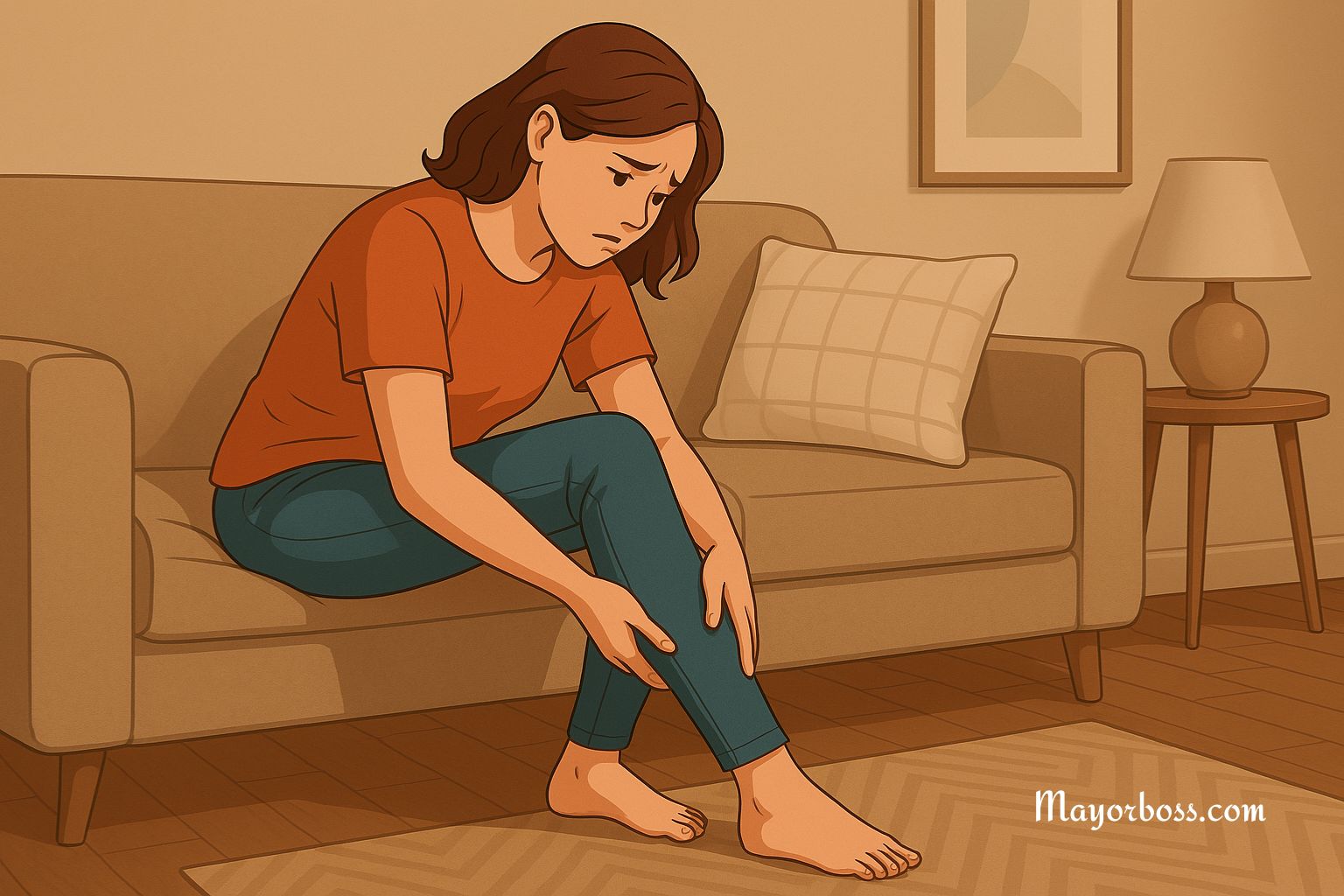When You Don’t Get Enough Zinc, This Is What Can Happen To Your Legs
Zinc is a vital mineral that supports many essential functions in the body. It helps with wound healing, supports the immune system, and plays a primarily key role in skin health and cell repair. But what happens when your body doesn’t get enough zinc? While the effects of zinc deficiency can show up in many ways, your legs can be one of the first areas to reveal the problem.

Poor Wound Healing
One of the most noticeable signs of mild zinc deficiency is delayed wound healing. If you have small cuts, scratches, or sores on your legs that take a long time to get better, low zinc might be part of the reason. Zinc helps your body repair skin and tissue. Without enough of it, the healing process slows down, leaving wounds open longer and more likely to become infected.
Even minor scrapes or bug bites can take longer to heal when your zinc levels are too low. In severe cases, people may develop chronic ulcers on the legs, especially if they already have circulation problems or diabetes.
Dry, Scaly Skin
Another common symptom linked to low zinc is dry, rough, or scaly skin on the legs. Zinc helps maintain the skin’s barrier and keeps it hydrated. Without it, the skin can become irritated and start to flake. This can look like eczema, with red or itchy patches that crack or peel.
Some people notice a rash that won’t go away, even with moisturizers or other skin care products. The rash often appears on the lower legs, ankles, or feet and may be a sign that the skin is struggling to repair itself due to a lack of zinc.
Numbness or Tingling
Zinc is important for nerve function. When zinc levels drop too low, it can interfere with the way nerves send signals. This can cause unusual sensations in the legs, such as tingling, burning, or numbness. These symptoms are similar to what people with nerve damage experience.
Though this isn’t common in mild zinc deficiency, it can occur if the deficiency becomes more severe or lasts a long time. If you feel pins and needles in your legs without an obvious cause, it might be worth checking your zinc levels, especially if you also notice other signs like poor skin healing or hair loss.
Muscle Weakness
Zinc helps your muscles work properly. A shortage can lead to weakness or fatigue in the legs. Some people report feeling tired even after walking a short distance or climbing a few stairs. They may struggle with leg cramps or muscle soreness, especially at night.
This weakness doesn’t always manifest right away. It may start gradually, making it harder to notice at first. Over time, though, low zinc can reduce muscle strength and slow down recovery after activity.
Hair Loss on the Legs
Hair loss is a classic sign of zinc deficiency, and it’s not limited to the scalp. Some people begin to notice thinning hair or bald patches on their legs, especially on the shins. This happens because zinc helps with hair growth and keeps hair follicles healthy.
When zinc is low, the body may stop growing hair in places that aren’t as essential. While this might not seem serious, it’s often a warning sign that your body isn’t getting the nutrients it needs.
Swelling and Inflammation
Zinc also helps control inflammation in the body. When your zinc levels drop, your body may react with increased swelling in the lower legs, ankles, or feet. This swelling, known as edema, may be mild or more noticeable depending on the severity of the deficiency.
In people with chronic conditions such as diabetes, low zinc can increase the risk of inflammation and infection in the legs. This makes it even more important to maintain healthy zinc levels.
Increased Risk of Infection
Zinc is essential for immune function. If you have low zinc levels, your body may struggle to fight off infections. For your legs, this can mean an increased risk of cellulitis—a painful skin infection that causes redness, swelling, and warmth.
People with zinc deficiency may get more frequent skin infections or find that infections are harder to treat. Even small cuts can turn into serious problems if the immune system isn’t working well.
Who Is Most at Risk?
Zinc deficiency isn’t rare, but some groups are more likely to develop it. These include:
- People with digestive issues like Crohn’s disease or celiac disease
- Those who follow a vegetarian or vegan diet without zinc-rich foods
- Older adults, especially those with poor appetite or chronic illness
- Individuals with liver or kidney disease
- People who drink large amounts of alcohol
If you fall into one of these groups and notice leg symptoms that won’t go away, consider talking to your healthcare provider about zinc testing.
Treatment
If you think you might have low zinc levels, the best first step is to speak with a healthcare professional. A simple blood test can check your zinc status. If your levels are low, your provider may recommend dietary changes or supplements.
Good sources of zinc include:
- Red meat
- Poultry
- Shellfish (especially oysters)
- Beans
- Nuts
- Whole grains
- Dairy products
Zinc supplements are available, but they should only be taken under medical guidance. Too much zinc can also cause health problems, so it’s important not to self-treat without proper advice.
Final Thoughts
Your legs can tell you a lot about your overall health. When they show signs like slow healing, skin changes, or weakness, it might be your body’s way of saying it needs more zinc. Paying attention to these signs and seeking medical advice.
